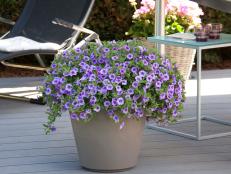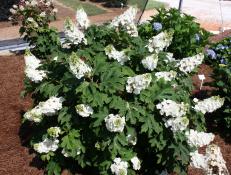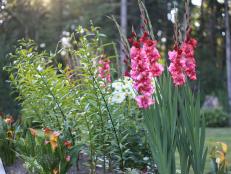How to Grow Sweet Alyssum
Sweet alyssum brings color and fragrance to your early spring garden. Easy to grow from seed, alyssum is a low-growing plant that carpets the ground with tiny white or lavender flowers.

Shutterstock / JollySam
Snow Princess, a sweet alyssum that’s heat and sun tolerant, is known for its non-stop summer flower show.

Sweet alyssum is a common flowering plant you can grow from seed or buy in packs of plants at a local nursery. Alyssum is a short-lived perennial that's grown as an annual in most of the US.
Alyssum thrives in cool temperatures, and will bring color and fragrance to your garden in early spring. Set out alyssum bedding plants as soon as the last frost has passed and you'll have blooms throughout spring. Plant in containers around your patio or deck so you can breathe in its sweet smell as you sit outside. It's easy to grow and combines well with other plants in pots or hanging baskets.
Alyssum 101
Alyssum is native to the Mediterranean and a classic heirloom plant of cottage gardens. It's called sweet alyssum for the vanilla-honey scent of its white, pink and lavender blooms. It's in the same family as mustard and its flowers are edible, with a peppery taste.
28 Easy-to-Grow Annual Flowers That Thrive in the Shade 29 Photos
Brighten dark corners with the flower power of made-for-the-shade annuals.
Alyssum is often grown as a groundcover because it gets just 3 to 9 inches tall and up to 4 feet wide, depending on the variety. In very hot climates or when planted in direct sun, alyssum will stop blooming once summer kicks in. Trim it, keep it watered, and alyssum will start making flowers again in the fall when temperatures cool off.
Botanical Name: Lobularia maritima
Common Name: Sweet alyssum
Size: 3 to 9 inches tall and up to 4 feet wide
Hardiness Zones: Annual in Zones 5 to 8, short-lived perennial in Zones 9 to 11
Bloom Time: spring, fall
Bloom Colors: white, pink and lavender blooms
Planting Alyssum
Alyssum is super easy to grow from seed. Start alyssum seeds outdoors on the last frost date in your area or get a jump on spring and start alyssum seeds indoors six to eight weeks before spring, then transplant your seedlings outdoors.
Buy bedding plants if you're not an indoor seed growing sort of person but still want fast flowers in the spring. Alyssum does well as a transplant.
Put alyssum in a container at nose-level for immediate flower and aroma gratification. Alyssum looks great spilling out of a container. It also makes a great groundcover and will carpet a flowerbed. Plant alyssum along a walkway, and it will spill over the edges of the path with cascades of sweet-smelling blooms.

Shutterstock / Yui Yuize
Use alyssum in part shade to full sun as a spiller in containers, or as a butterfly-attracting ground cover in beds.
Alyssum is beneficial to an ecological garden because it attracts bees, butterflies and ladybugs. We all know why pollinators are important, but ladybugs will eat bad bugs like aphids. Smart gardeners plant a guard row of alyssum to attract ladybugs who will eat aphids before they devour bell peppers, roses, and tomatoes. Or they tuck alyssum along the borders of vegetables, flowers or fruit trees to keep the aphids away.
Companion Planting in Your Vegetable Garden 16 Photos
Find detailed info and links for specific companion plants and planting techniques for popular vegetable garden crops in our alphabetical list, from beets to zucchini.
Alyssum prefers full sun in cool climates, but it will bloom longer in partial shade in hotter climates. It likes well-drained soil and medium moisture. Some varieties are more heat-tolerant than others and will keep blooming in full sun conditions all summer.
Caring for Alyssum
Keep it moist. Alyssum tolerates short periods of drought, but it does best with consistent watering.
Fertilize lightly. Too much fertilizer will give you lots of leaves and stems and very few blooms.
Deadhead it. Alyssum will make more flowers if you cut off the spent blooms.
Prune to keep the plant neat and blooming. Leggy plants are homely and won't make as many flowers. Trim your alyssum to promote re-blooming.
Hot weather will slow down or even stop alyssum from blooming, depending on the variety. Give the plant a light shearing, keep watering it, and give it a bit of fertilizer while it rests to help it live to fall. Alyssum will bloom again when cooler temperatures return.
Pests and Diseases
Sweet alyssum attracts so many beneficial bugs that not much can take them down. Cyclamin mites sometimes attack alyssum and suck the sap out of their blooms. If mites attack, prune off the damaged parts of the alyssum and spray the remainder with neem oil or horticulture oil to kill mite eggs. If necessary, treat plants with insecticidal soap.
Gray mold, a type of fungus, can form on blooms in cool, damp climates. Remove parts of alyssum damaged by the mold and spray a fungicide on the remaining plant parts every two to three weeks until the mold is gone.
Recommended Alyssum Varieties
Older cultivars of sweet alyssum can reseed themselves and are more cold-hardy than newer hybrids. Older types are more drought hardy. New cultivars of alyssum have advantages, too, namely that they grow larger and bloom all summer with no cessation from the heat. Generally speaking, the white cultivars of alyssum are the most robust.
'Snow Princess' is a sterile hybrid from Proven Winners that's a heat-tolerant, vigorous plant that produces drifts of white, fragrant blooms.
'New Carpet of Snow' is short, reaching just 3 inches tall, and producing white flowers. It's a good choice for groundcover.
'Clear Crystals' is a series of alyssum that produces extra-large flowers in lavender, purple and white.
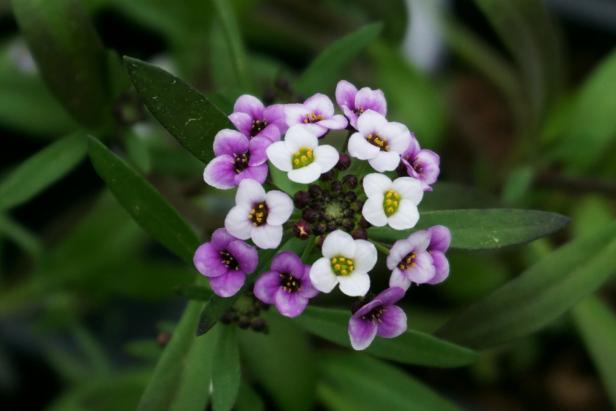
Shutterstock / Josiah True
Rosie O'Day Alyssum
'Aphrodite' series alyssum produces flowers in apricot, salmon, lemon and red as well as the standard purple and white on early-blooming plants.
'Rosie O' Day' is an All-American winner with rose-colored flowers

.-Battle-on-the-Beach-courtesy-of-HGTV.-.jpg.rend.hgtvcom.196.196.suffix/1714761529029.jpeg)






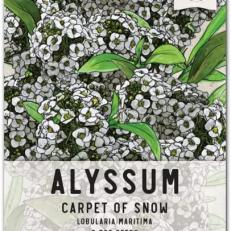
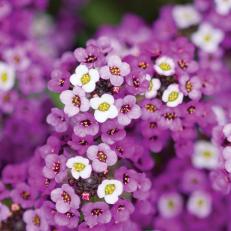
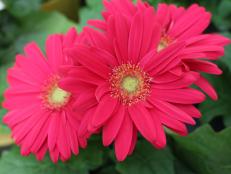
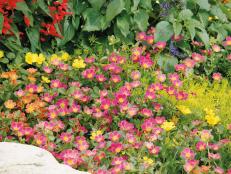
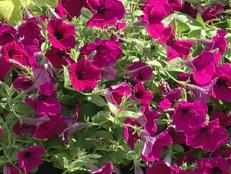

.jpg.rend.hgtvcom.231.174.suffix/1716908436155.jpeg)

